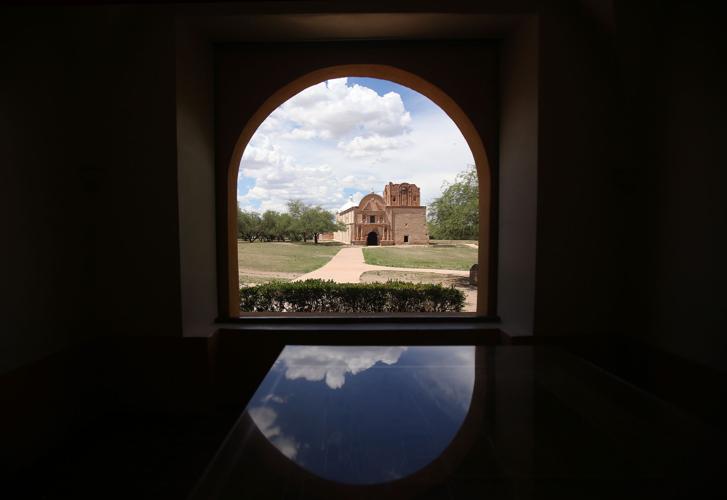TUMACACORI MISSION — Visitors to this national historical park south of Tucson usually focus first on a historic church that stands near a mission site founded by Jesuit missionary Eusebio Francisco Kino in 1691.
But a closer examination of the grounds reveals a fascinating botanical garden of blooming flowers, citrus trees, fragrant herbs and an orchard of heritage fruit trees like those that provided food long ago for missionaries and worshippers.
Master gardeners based in Tucson now maintain the garden and orchard on a volunteer basis — aiming not only to enhance the beauty of the site but to reveal botanical aspects of its history.
“We research the historically correct plantings, whether that’s fruit trees or herbs that missionaries might have brought over from Spain,” said Debbie McIntosh, a member of the Pima County Master Gardeners group. “The missionaries were the plant people, the botanists, of the time. You get a better feel for what life was like there from the plants.”
Members of the Master Gardeners typically visit the mission two days a month to plant and care for trees and other vegetation.
“Usually about six of us go down to Tumacácori and spend maybe four hours or more there,” McIntosh said. “We usually start in the orchard. The heritage trees in the orchard all came from cuttings and seed.”
Trees at the site include peach, quince, pear, apple, apricot, plum, pomegranate and fig, she said.
Other trees around the mission include a sour orange tree, an ornamental pomegranate and olives growing in a courtyard area.
PRECIOUS HERBS
Herbs played an important role in mission life during the 1700s and 1800s.
Members of the Master Gardeners have conducted a detailed study of plants and herbs brought to the site from Spain.
“We worked with the park staff and wrote an ethnobotanical book called ‘Courtyard Garden: Plant Origins and Historical Uses,’” McIntosh said. ”You can check it out in the visitor center and use it free.”
Herbs served both as food and medicine.
“They grew herbs for cooking, but it was also the pharmacy,” McIntosh said.
“Milk thistle, I always point out, was important medicinally for helping to cleanse the liver and kidneys of toxins,” she said. “It’s a gorgeous variegated-leaf plant. Culinary uses including eating it like a salad green or as a substitute for spinach.”
Another useful herb was thyme.
“Thyme, like people have in gardens, was used on bandages to aid healing,” McIntosh said. “It’s amazing how some of this stuff was used.”
ONGOING PROJECTS
The Master Gardeners have taken steps recently to prevent non-native Bermuda grass from taking over the orchard.
“And we just received a grant from the White Elephant thrift store in Green Valley for orchard expansion and an irrigation upgrade,” McIntosh said.











